Do you have a question about the Samsung PS50C7000 and is the answer not in the manual?
Avoid screen image retention and burn-in by reducing brightness and contrast for still images.
Prevent after-images from video games/PC by reducing brightness and contrast for long periods.
Ensure proper ventilation by maintaining distance from walls. Use only Samsung provided parts.
List of items included with the PDP TV, including remote, cables, and adapters.
Description of the TV's physical control buttons and their functions.
Explanation of remote control buttons and their functions for operating the TV.
Guide for connecting an antenna and performing initial setup for channel tuning.
Automated on-screen prompts for basic TV configuration like country and channel selection.
Instructions for connecting AV devices using HDMI/DVI cables for HD connection.
Guide for connecting audio devices via Optical or Headphone cables.
How to select and change between different input sources connected to the TV.
Steps for navigating the TV's on-screen display (OSD) menus and adjusting settings.
Using the INFO button to view current channel status and program information.
Using the EPG to schedule programs in advance for automatic channel changes.
How to view channel lists and program information using the Channel View feature.
Tools for managing channels, including favorites, sorting, and locking.
Settings for retuning channels, auto store, manual store, and editing channel names/numbers.
Adjusting picture quality settings, including preset modes, advanced settings, and eco solutions.
Detailed settings for screen appearance like black tone, contrast, gamma, and white balance.
Settings available in PC mode: Colour Tone, Size, and Screen Burn Protection.
Adjusting picture size (16:9, Zoom, Screen Fit) and colour tone (Cool, Normal, Warm).
Using filters to reduce picture noise and improve quality for weak signals.
Features to prevent screen burn-in and reduce image retention through pixel movement.
Instructions and safety warnings for viewing 3D content on the TV.
Choosing different 3D input formats like 2D-3D, Side by Side, Top & Bottom, etc.
Automatically switching to 3D mode for 'Side by Side' HDMI signals; manual selection is also available.
Steps to connect and configure the TV for use as a PC display.
Configuring PC software settings for optimal display on the TV screen.
Adjusting sound modes, equalizer, audio language, and speaker output.
Adjusting DTV audio level, SPDIF output, audio delay, and Dolby digital compression.
Choosing sound modes like Dual I-II, Mono, Stereo, or NICAM for optimal audio.
Setting the TV clock manually or automatically for timer features.
Automatically shuts off the TV after a preset period of time.
Setting up to three different timers for automatic TV power on/off with volume and source selection.
Using Child Lock and Parental Lock to prevent unauthorized access to channels.
Setting preferred languages for teletext and audio/subtitle preferences.
Enabling subtitles, selecting modes (Normal, Hearing Impaired), and subtitle language.
Configuring network type, setup, test, and wireless link connections.
Watching TV tuner and external video source simultaneously in a PIP window.
Activating and configuring Picture-in-Picture features like channel, size, position, and sound selection.
Running tests for picture, sound, and signal information to diagnose TV problems.
Accessing troubleshooting tips, picture tests, sound tests, and signal information.
Methods for upgrading TV software via USB or online for new features and fixes.
Information on connecting external devices for optimal HD screen quality.
Information on how to get help for TV issues or software upgrades.
Instructions for connecting a PC via HDMI/DVI or D-sub cable and display modes.
Connecting the TV to a local area network (LAN) for internet access via wired connections.
Automatically configuring network settings for DHCP-supported networks.
Manually entering IP address, subnet mask, gateway, and DNS for static IP networks.
Connecting the TV wirelessly using a Samsung Wireless LAN Adapter and a wireless router.
Setting up the TV connection automatically using APs that support Auto Configuration.
Connecting to a wireless network using the router's PBC (WPS) button for automatic setup.
Automatically setting up wireless connection by searching for available networks.
Connecting to a mobile device directly without an access point using a peer-to-peer network.
Manually entering network settings like IP address, subnet mask, and gateway.
Connecting Samsung devices supporting PBC (WPS) to the TV without a sharer.
Directly connecting a device supporting PBC (WPS) to the TV when SWL is On.
Enjoying recorded TV, photos, music, and movies from USB devices or PC network.
Playing media files from a PC over a network connection using PC Share Manager.
Lists functions not supported when connecting to PC via network, like background music and sorting.
Important information before using Media Play, including supported file systems and device types.
Selecting and playing video files from connected storage devices.
Viewing recorded TV programs from a connected USB device.
Pausing and rewinding live TV broadcasts using the Timeshift Mode.
Important notes regarding DRM, data broadcasts, USB device limitations, and function conflicts.
List of supported video file extensions, codecs, resolutions, bit rates, and audio codecs.
Resuming playback of recorded TV or movie files from the point where it was stopped.
Selecting and playing music files from connected storage devices.
Viewing individual photo files or starting a slide show of all files in the list.
Selecting multiple files from the list for playback or to play as a group.
Accessing options for repeat mode, picture size, sound, subtitles, and slide show settings.
Configuring background settings, resume play, DivX VOD registration, and connected device information.
Controlling Samsung Anynet+ compatible devices with the TV remote for integrated home theatre experience.
Diagram and instructions for connecting the TV to a home theatre system using HDMI and optical cables.
Describes Anynet+ menu items like View TV, Device List, Recording, INFO, and Stop Recording.
Enabling Anynet+ (HDMI-CEC) and configuring Auto Turn Off for connected devices.
Selecting and switching between different Anynet+ devices connected to the TV.
Making recordings of TV programmes using a Samsung recorder and managing recording devices.
Listening to sound through a receiver (Home Theatre) instead of TV speakers via optical or HDMI.
Using HDMI ARC for digital audio output to a receiver without a separate optical cable.
Common Anynet+ issues like non-operation, device not displaying, and no sound, with possible solutions.
Accessing web content and services directly from the TV, including network setup and app usage.
Description of the Internet@TV screen elements: TV Screen, Information, Application service, and controls.
Logging into your Internet@TV account for personalized application experiences.
Configuring system setup, Internet@TV ID, channel bound service, and service lock password.
Downloading applications like videos, music, photos, and games from the Samsung Apps store.
Browsing applications by categories like What's New, Video, Sports, Lifestyle, Information, and Other.
Solutions for common Internet@TV issues like language problems and network errors.
Connecting TV with mobile phones and other devices for media sharing and control.
Enabling message, media, and ScreenShare functions, and setting the TV name.
Viewing media contents (videos, photos, music) sent from a mobile phone.
Using a mobile phone to view phone book, calendar, and files on the TV.
Controlling TV functions like power and volume using a Samsung mobile phone.
How to use the analogue teletext service, including page navigation and features.
Steps for organizing and securing cables for stand and wall-mount installations.
Guidelines and specifications for safely installing the TV wall mount kit.
Instructions and precautions to prevent the TV from falling when wall-mounted.
Common issues and solutions for picture, sound, and connectivity problems.
Troubleshooting steps for when the TV won't turn on, turns off automatically, or shows no picture.
Solutions for not receiving all channels or distorted pictures due to signal issues.
Troubleshooting 'Mode Not Supported' messages and checking PC output settings.
Resolving wireless network connection failures and USB device recognition problems.
Troubleshooting recording function failures, USB device errors, and Timeshift Mode issues.
Resolving issues with recording/Timeshift functions when a low-capacity USB device is used.
Addressing black bars on screen due to aspect ratios or scaled SD content.
Troubleshooting steps for a non-functional remote control, including battery checks and sensor cleaning.
Understanding normal humming sounds and potential causes for loud noise, like high brightness.
Minimizing screen burn-in using built-in technology like Pixel Shift and screen burn reduction.
Troubleshooting PIP menu unavailability, often related to HDMI/PC source or CAM card installation.
Resolving 'Scramble signal' or 'Weak Signal/No Signal' messages by checking signal source and CAM card.
Information on licenses for technologies like TheaterSound, Dolby, DTS, and DivX.
Detailed technical specifications including panel resolution, environmental conditions, dimensions, and weight.
| Depth | 35.9 mm |
|---|---|
| Width | 1211 mm |
| Height | 749 mm |
| Audio system | Dolby Digital Plus, Dolby Pulse |
| Product color | Black |
| Audio (L/R) in | 1 |
| Audio (L/R) out | - |
| RMS rated power | 20 W |
| Display diagonal | 50 \ |
| Display technology | Plasma |
| Power requirements | 100 - 240V 50 / 60Hz |
| HDMI ports quantity | 4 |
| Remote control type | TM1080 |
| USB 2.0 ports quantity | 2 |
| Panel mounting interface | 400 x 400 mm |
| Display diagonal (metric) | 127 cm |
| Power consumption (standby) | 0.3 W |


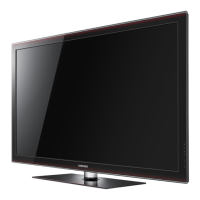

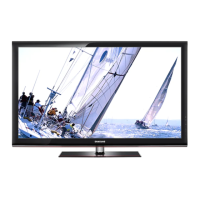

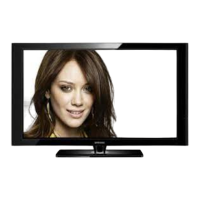

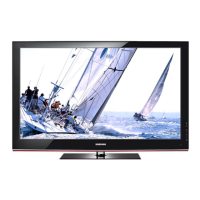

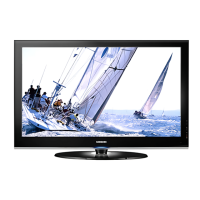

